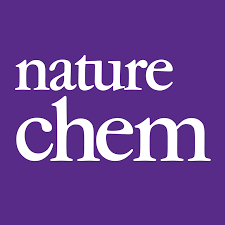| Abir Ganguly |

Abir Ganguly's paper titled "Confluence of theory and experiment reveals the catalytic mechanism of the Varkud satellite ribozyme" (or as we like to call it "Abir vs VS") has been published in Nature Chemistry. This collaborative work where theory and experiment team up to tackle down important scientific questions will surely be exemplery. Congratulations to York and Piccirilli Labs, and Abir Ganguly specifically! This paper has also been highlighted in Expert Pitch section of Newswise and Sciencenewsnet.
You can read more on the importance of this work below:
Nearly three decades ago, it was shown that certain RNA molecules can act as biological catalysts much like protein enzymes. This discovery not only lent credence to the RNA World Hypothesis - the hypothesis that earlier forms of life relied solely on RNA to store genetic information as well as catalyze chemical reactions - but also gave rise to the entire field of RNA catalysis, which has since profoundly influenced our understanding of the role of RNA in biology and led to the emergence of new RNA based technologies and medical therapies.
From a biochemistry perspective, catalysis carried out by RNAs is fascinating. RNAs do not possess the wide and diverse range of functional groups that are at the disposal of protein enzymes; instead they contain only a limited, rather inert set of chemical groups, and yet, the RNA enzymes, or Ribozymes, can achieve rate enhancements typically up to six orders of magnitude or more, in some cases comparable to the intrinsic rates of protein enzymes.
In our study, we combined a wide range of computational simulations and experiments to determine the catalytic mechanism of the Varkud satellite ribozyme (VSr), an enzyme that is able to cleave the RNA backbone and an important model system for RNA catalysis. We precisely pinpointed the key catalytic interactions, and in the process provided new theoretical evidence for an essential divalent metal ion in the active site that was then confirmed by experiments. This metal ion, that was undetected in the crystal structures, organizes the active site and plays a role that is unique for metal ions in RNA enzymes. Further, we characterized the rate-limiting "transition state" in unprecedented detail, including the degree to which protons are transferred in the process of bond cleavage. The insights gained from this study can be used to guide future design of new RNA-based biotechnology, and allowed for the first time new functional links to be made between VSr and other ribozyme classes, suggesting possible evolutionary connections.
